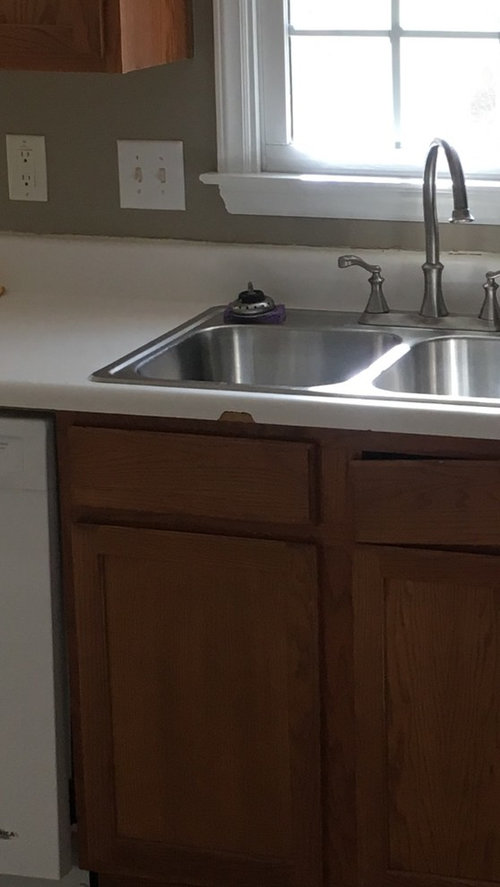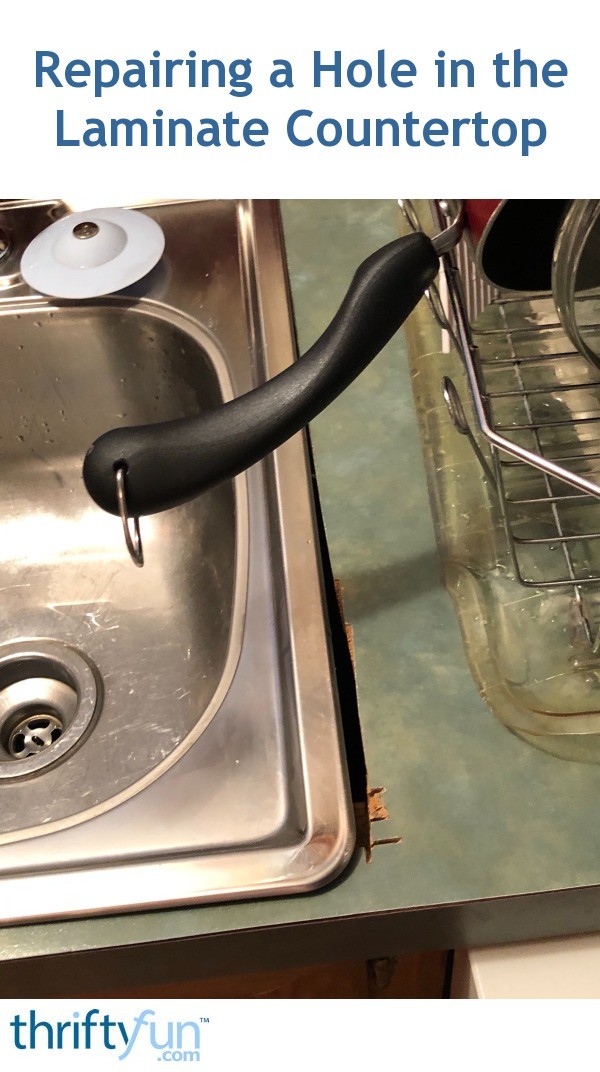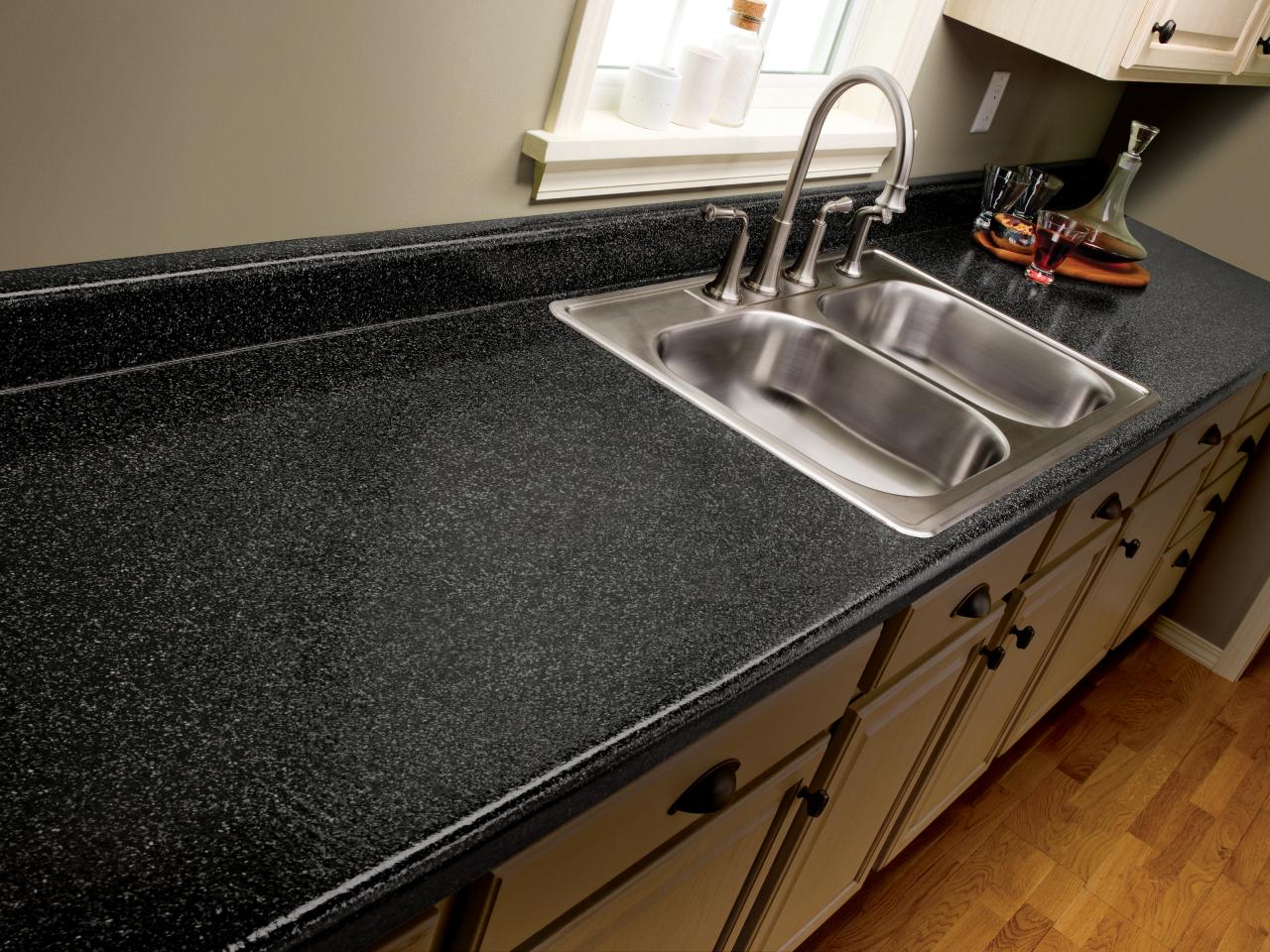Repairing a broken laminate countertop can seem daunting, but with the right tools and techniques, it’s a task that can be handled by most homeowners. Laminate countertops are popular due to their affordability, durability, and wide range of designs. However, they can suffer from issues such as chips, cracks, and lifting seams. Understanding how to address these problems can extend the life of your countertop and keep it looking new.
First, assess the damage to your laminate countertop. Chips and small cracks are common and can be repaired relatively easily with a laminate repair paste. This paste is available in various colors to match your countertop. Clean the damaged area thoroughly to remove any debris or grease, ensuring the repair paste adheres properly. Apply the paste using a putty knife, smoothing it out so it’s level with the surrounding surface. Once it dries, you can lightly sand the area and apply a sealant to protect the repair.
For larger cracks or holes, you’ll need a laminate repair kit, which includes a filler compound and a matching colorant. Begin by cleaning the damaged area and mixing the filler compound according to the manufacturer’s instructions. Apply the filler into the crack or hole, using a putty knife to ensure it’s evenly distributed. Once the filler sets, usually within a few hours, you can sand it down to create a smooth surface. Apply the colorant to blend the repair with the rest of the countertop.
When dealing with lifting or peeling laminate, the process involves re-gluing the laminate back to the substrate. First, gently lift the laminate and clean both the underside of the laminate and the substrate surface to remove old adhesive residue. Apply a contact adhesive to both surfaces and allow it to become tacky, as per the adhesive instructions. Press the laminate back into place, starting from one end and working towards the other to avoid air bubbles. Use a roller to ensure good contact and remove any air pockets.

If your laminate countertop has bubbled due to moisture or heat, you can often fix it by using a clothes iron. Place a piece of cloth over the bubbled area and apply heat with the iron set on a low setting. The heat will soften the adhesive, allowing you to press the laminate back into place. Use a roller to ensure it’s firmly adhered. Be cautious not to overheat the laminate, as it can cause further damage.
Edges of laminate countertops are prone to chipping and peeling. To repair a chipped edge, use a matching laminate repair paste or filler. Clean the chipped area, apply the paste or filler, and smooth it out. For peeling edges, reattach the laminate using contact adhesive, similar to the process for lifting laminate. Ensure the edge is firmly pressed into place and trim any excess material for a neat finish.
Sometimes, laminate countertops develop stains that are difficult to remove. For stubborn stains, use a mixture of baking soda and water to form a paste. Apply the paste to the stain, let it sit for a few minutes, and then scrub gently with a soft cloth. Avoid using abrasive cleaners or pads, as they can damage the laminate surface. Regular maintenance and prompt cleaning of spills can prevent stains from becoming a significant issue.

Seams in laminate countertops can separate over time, especially in areas exposed to moisture. To repair separated seams, clean the area thoroughly and apply a waterproof adhesive to the gap. Press the seams together and use a roller to ensure good adhesion. Wipe away any excess adhesive before it dries. Once the adhesive is set, you can apply a sealant to the seam to prevent moisture from causing future problems.
If your laminate countertop has deep scratches, you may need to use a laminate repair kit with a wax filler stick. Clean the scratched area and rub the wax stick over the scratch to fill it in. Smooth the wax with a soft cloth, and use a laminate polish to blend the repair with the rest of the surface. For very deep or extensive scratches, replacing the affected section of laminate may be necessary.
For countertops with large sections of damage or irreparable areas, consider applying a new layer of laminate. This process involves removing the old laminate, preparing the surface, and applying a new sheet of laminate. It’s a more extensive project but can give your countertop a completely refreshed appearance. Ensure you measure and cut the new laminate precisely to fit your countertop.
When cutting laminate for repairs or new applications, use a fine-tooth saw blade to prevent chipping. Apply masking tape along the cut line to further reduce the risk of chips. Cut slowly and steadily, supporting the laminate to avoid cracking. After cutting, smooth the edges with fine-grit sandpaper.

Regular maintenance of your laminate countertop can prevent many common problems. Use cutting boards to avoid knife marks, trivets for hot pots and pans, and clean spills promptly. Avoid standing water on the surface, especially near seams and edges, as prolonged exposure to moisture can lead to swelling and delamination.
When using adhesive for repairs, follow the manufacturer’s instructions carefully. Different adhesives have specific application methods and drying times. Ensure the room is well-ventilated when working with adhesives and wear protective gloves to avoid skin contact.
For more extensive repairs, consider hiring a professional. While DIY repairs are effective for minor issues, larger damages may require specialized tools and expertise. A professional can ensure the repair is seamless and the countertop remains durable.
Finally, always match the repair materials to your laminate countertop’s color and texture. This ensures the repair blends in and maintains the aesthetic appeal of your kitchen or bathroom. Many home improvement stores offer color matching services for laminate repair products.

Common Mistakes to Avoid:
Using Abrasive Cleaners: Abrasive cleaners can scratch the laminate surface, leading to dullness and more significant damage over time. Always use non-abrasive cleaners and soft cloths.
Ignoring Small Damages: Small chips and cracks can expand if not repaired promptly. Address minor issues as soon as they appear to prevent larger, more costly repairs.
Incorrect Adhesive Application: Using too much or too little adhesive can lead to poor adhesion. Follow the manufacturer’s instructions for the correct amount and application method.
Not Allowing Adequate Drying Time: Rushing the repair process by not allowing adhesives or fillers to dry completely can result in weak repairs. Patience is crucial for long-lasting repairs.
Overheating with Iron: When using a clothes iron to fix bubbles, excessive heat can damage the laminate. Use a low setting and apply heat gradually.

Can I repair a laminate countertop myself, or should I hire a professional?
Yes, many laminate countertop repairs can be done by yourself, especially if you have basic DIY skills. Minor damages like chips, small cracks, and peeling edges are manageable with the right tools and materials. However, for extensive damage, such as large cracks or significant lifting, or if you’re not confident in your repair skills, hiring a professional is advisable. Professionals have the experience and tools to ensure a seamless repair that maintains the integrity and appearance of your countertop.
What tools and materials do I need for laminate countertop repairs?
The tools and materials you’ll need depend on the type of damage you’re repairing. Common items include laminate repair paste or filler, a putty knife, sandpaper, contact adhesive, a clothes iron, a roller, and a cleaning solution. For more extensive repairs, you might need a fine-tooth saw blade, a laminate repair kit, or even a new sheet of laminate. Having these tools and materials on hand will help you address a variety of laminate countertop issues effectively.
How can I prevent my laminate countertop from getting damaged?
Preventing damage to your laminate countertop involves regular maintenance and taking precautions during use. Always use cutting boards to avoid knife marks, trivets for hot pots and pans, and clean spills promptly to prevent staining. Avoid using abrasive cleaners that can scratch the surface. Keep the countertop dry, especially around seams and edges, to prevent moisture damage. By following these practices, you can extend the life of your laminate countertop and keep it looking new.
What should I do if my laminate countertop has a large crack?
If your laminate countertop has a large crack, you’ll need to use a laminate repair kit that includes a filler compound and a colorant. Clean the area thoroughly, mix the filler compound according to the instructions, and apply it to the crack. Smooth it out with a putty knife and let it set. Once it’s dry, sand the area smooth and apply the colorant to blend the repair with the surrounding surface. For extensive cracks, you may need to consider replacing the damaged section of laminate.
Can I replace a section of laminate on my countertop, or do I need to replace the entire surface?
You can replace a section of laminate on your countertop without replacing the entire surface. This is a practical solution for dealing with large damaged areas. To do this, carefully remove the damaged laminate section, prepare the substrate, and apply a new sheet of laminate cut to fit the area. Make sure to use the same adhesive and follow the application instructions to ensure a secure bond. This method can save time and money compared to a full countertop replacement while still providing a refreshed appearance.

Chipped, worn laminate countertops? We can fix that! Rather than

Countertop Repair Formica Repair Fix Damaged Countertop

How to repair a deep scratch in your laminate countertop

How to Repair and Refinish Laminate Countertops

Related articles:
- Laminate Countertop Ideas For Kitchen
- Dark Green Laminate Countertops
- Repair Laminate Countertop Edge
- Laminate Countertops In Bathroom
- Refinish Laminate Countertops DIY
- Laminate Countertop Cleaner
- DIY Concrete Over Laminate Countertops
- DIY Laminate Countertops Installation
- Formica Laminate Countertop Edges
- Applying Laminate Countertops